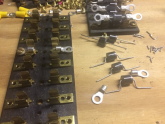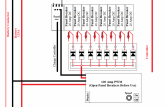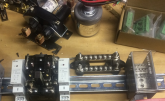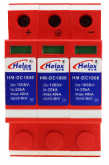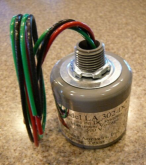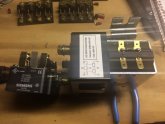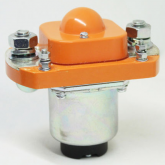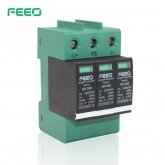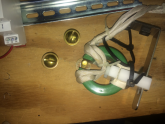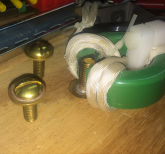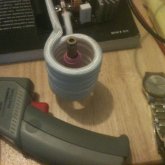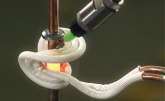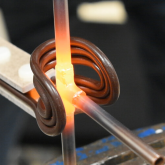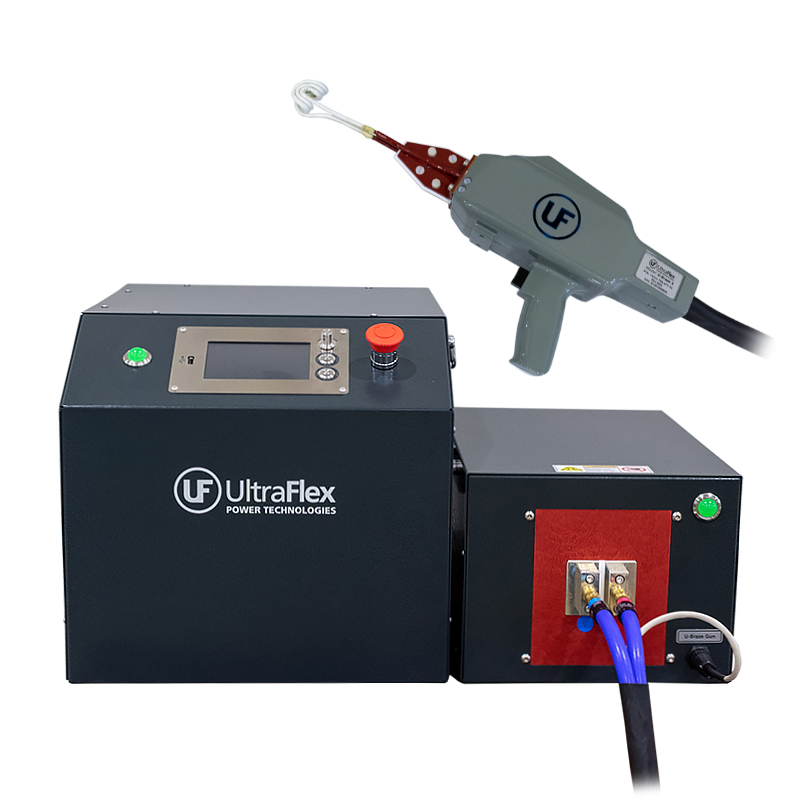JeepHammer
Solar Wizard
- Joined
- Nov 15, 2019
- Messages
- 1,149
This Started As Fire Alarm/System Shut Down
The idea was to disconnect batteries from everything but the fire alarm and fire extinguisher,
And hold everything 'Open Circuit' until the system was manually reset.
Since then it has taken on a life of it's own,
It now protects panels and charge controller from Over Voltage,
It protects the very expensive LFP batteries from extended Over/Under Voltage,
And it still triggers everything to shut down in the event of a fire.
I don't recommend ANYONE attempt this, This is simply my build.
If you attempt something like this, I take no responsibility for YOUR actions, your safety is up to YOU.
This is for informational purposes ONLY.
This system is in 48 VOLTS, any attempt to use any of the parts I may link WILL NOT be compatible with most anything on the common market.
------------------------------------------------------------------------
Having the big contactor at the battery (Main Disconnect) for fire safety got all this started.
When I got batteries that were seriously charge/discharge sensitive I threw the ability to disconnect panels/charge controller in an Over Volt situation,
And disconnect battery from main loads in an Under Volt situation.
Now both get shut down in a Fire situation

What the start of that looks like.
Still Waiting On Parts...

Getting Some Color Coding So You Can Tell What Goes Where, Some Specifications In The Diagram, Wire Gauge & Color Coding.

Nothing is tucked away and tidy, the wiring is in progress so it's hanging out everywhere and being tested.
As I cycle test, I find things like undersized wire, Relays that don't like to function properly, ect.
I am using 'China Mart' parts after all, and while the clicking of the relays/contactors can be annoying, better a failure while 'Burning In' on a bench test than a failure in operation.
My 48V power supply is getting a workout, and I wish more companies did burn in testing before they shipped, it would save a ton of returns and 'Mystery Fail' issues you will experience if you do this very long...



I may revise the power converter to low voltage latching relay, depending on how the DIN relays on order perform.
The 48V cube type relay is equipped with diodes to latch it closed for protection hardware once the trigger signal is given by the latching relay.
I would like to use a more common DIN latching relay, but DIN 48V DC latching relay aren't all that common or cheap, and they sometimes won't trigger correctly on the signal from common 9V smoke detectors.
I will post details from testing since I have 3 or 4 different types coming, but it may be March before they get here since the boats from 'China Mart' seem to be getting slower every day (or month, or months)...
-------------------------------------------------------------------------------------------------------------------------
SINCE THIS IS PRIMARILY FIRE PROTECTION, A SMOKE DETECTOR ISN'T GOING TO DO THE JOB.
You don't want the fire suppression going off when you burn dinner, do some soldering,
(or sneak a smoke in the utility room using the battery vent fan )
)
*I* simply add a Normally Open (NO) temperature switch to the smoke alarm.
I use mechanical temp switching, a Thermistor (solid state) with work with appropriate voltage sensitive relay attached.
I like something that's direct, simple and can be easily tested, and for the price you can't beat the little mechanical switches, I do replace smoke detectors from time to time, and having a few extras lets me install a fresh smoke/temp sensor over the electrical utilities, and you can even put one in the combiner/control box if you think it's necessary, they work in parallel.


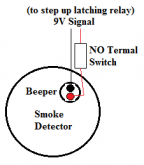
Smoke Detector AND 104*F Thermal Switch Have To Agree There Is A Fire Before Anything Activates.
Latching Relays come in all shapes & sizes, what I prefer is a little more complicated, but it comes with an 'Easy Button' for reset.
This one has a 48Vdc coil, but the price will leave you butthurt ($50), but it's compact, DIN mount, has a 'Reset' (change state) button built in.
I usually attempt to keep the common DIN components around $20 but this is an exception to the rule.
This one I haven't used (Yet) but I have one on the way to see if it cycles, still on the expensive side...
You simply add a small (under 3A) miniature NO switch to the activation terminals.
This one I use to activate a common relay I latch with a diode to keep the disconnects active and disconnected.
This one can be tripped with a single wire hookup, but the two wire hookup is more reliable..

===========================================================================
Some confusion about the use of Diodes which are quite useful and several are in virtually every compound electrical device you buy.
There are a minimum of 6 Rectifier Diodes in ever Vehicle Alternator, a minimum of 4 in every voltage regulator, and often dozens in every complicated electrical device you buy, like Charge Controllers & Inveters.
A Simple, Common Diode is a 'One Way Gate Valve' for electrical current.
They allow current to pass in one direction only, so they are used to isolate combined circuits from 'Back Feeding' (Isolation or 'Blocking' positions).
Keep in mind if you buy several at a time, you can get the 10A versions I use the most for 20 cents each, so there really isn't a reason not to turn the common, inexpensive relays into 'Locking' relays that cost MUCH more and expand *MY* (personally) capabilities.
This *Might* help explain why the diodes where they are and what they do in this particular circuit...

============================================================================
The idea was to disconnect batteries from everything but the fire alarm and fire extinguisher,
And hold everything 'Open Circuit' until the system was manually reset.
Since then it has taken on a life of it's own,
It now protects panels and charge controller from Over Voltage,
It protects the very expensive LFP batteries from extended Over/Under Voltage,
And it still triggers everything to shut down in the event of a fire.
I don't recommend ANYONE attempt this, This is simply my build.
If you attempt something like this, I take no responsibility for YOUR actions, your safety is up to YOU.
This is for informational purposes ONLY.
This system is in 48 VOLTS, any attempt to use any of the parts I may link WILL NOT be compatible with most anything on the common market.
------------------------------------------------------------------------
Having the big contactor at the battery (Main Disconnect) for fire safety got all this started.
When I got batteries that were seriously charge/discharge sensitive I threw the ability to disconnect panels/charge controller in an Over Volt situation,
And disconnect battery from main loads in an Under Volt situation.
Now both get shut down in a Fire situation

What the start of that looks like.
Still Waiting On Parts...
Getting Some Color Coding So You Can Tell What Goes Where, Some Specifications In The Diagram, Wire Gauge & Color Coding.

Nothing is tucked away and tidy, the wiring is in progress so it's hanging out everywhere and being tested.
As I cycle test, I find things like undersized wire, Relays that don't like to function properly, ect.
I am using 'China Mart' parts after all, and while the clicking of the relays/contactors can be annoying, better a failure while 'Burning In' on a bench test than a failure in operation.
My 48V power supply is getting a workout, and I wish more companies did burn in testing before they shipped, it would save a ton of returns and 'Mystery Fail' issues you will experience if you do this very long...


I may revise the power converter to low voltage latching relay, depending on how the DIN relays on order perform.
The 48V cube type relay is equipped with diodes to latch it closed for protection hardware once the trigger signal is given by the latching relay.
I would like to use a more common DIN latching relay, but DIN 48V DC latching relay aren't all that common or cheap, and they sometimes won't trigger correctly on the signal from common 9V smoke detectors.
I will post details from testing since I have 3 or 4 different types coming, but it may be March before they get here since the boats from 'China Mart' seem to be getting slower every day (or month, or months)...
-------------------------------------------------------------------------------------------------------------------------
SINCE THIS IS PRIMARILY FIRE PROTECTION, A SMOKE DETECTOR ISN'T GOING TO DO THE JOB.
You don't want the fire suppression going off when you burn dinner, do some soldering,
(or sneak a smoke in the utility room using the battery vent fan
*I* simply add a Normally Open (NO) temperature switch to the smoke alarm.
I use mechanical temp switching, a Thermistor (solid state) with work with appropriate voltage sensitive relay attached.
I like something that's direct, simple and can be easily tested, and for the price you can't beat the little mechanical switches, I do replace smoke detectors from time to time, and having a few extras lets me install a fresh smoke/temp sensor over the electrical utilities, and you can even put one in the combiner/control box if you think it's necessary, they work in parallel.


4PCS KSD301 45C 104F NO Thermostat Temperature Thermal Control Switch | eBay
SpecificationDescription:It is widely used for temperature control or protection for household electric appliances.It is open until the surface reaches 45 Celsius degree and then the switch closes.Application: , electric open bottles, sterilizer, microwave, coffee maker, rice cookers, air...
www.ebay.com

Smoke Detector AND 104*F Thermal Switch Have To Agree There Is A Fire Before Anything Activates.
Latching Relays come in all shapes & sizes, what I prefer is a little more complicated, but it comes with an 'Easy Button' for reset.
This one has a 48Vdc coil, but the price will leave you butthurt ($50), but it's compact, DIN mount, has a 'Reset' (change state) button built in.
I usually attempt to keep the common DIN components around $20 but this is an exception to the rule.
Finder 20.22.9.048.4000 DPST-NO 16A, 48V DC Coil, AgSnO2 Contact, 2 Step Impulse/Latching Relay: Amazon.com: Industrial & Scientific
Finder 20.22.9.048.4000 DPST-NO 16A, 48V DC Coil, AgSnO2 Contact, 2 Step Impulse/Latching Relay: Amazon.com: Industrial & Scientific
www.amazon.com
This one I haven't used (Yet) but I have one on the way to see if it cycles, still on the expensive side...
You simply add a small (under 3A) miniature NO switch to the activation terminals.
This one I use to activate a common relay I latch with a diode to keep the disconnects active and disconnected.
This one can be tripped with a single wire hookup, but the two wire hookup is more reliable..

ELECTRONICS-SALON Panel Mount Momentary-Switch/Pulse-Signal Control Latching 6921407344426 | eBay
Find many great new & used options and get the best deals for ELECTRONICS-SALON Panel Mount Momentary-Switch/Pulse-Signal Control Latching at the best online prices at eBay! Free shipping for many products!
www.ebay.com
===========================================================================
Some confusion about the use of Diodes which are quite useful and several are in virtually every compound electrical device you buy.
There are a minimum of 6 Rectifier Diodes in ever Vehicle Alternator, a minimum of 4 in every voltage regulator, and often dozens in every complicated electrical device you buy, like Charge Controllers & Inveters.
A Simple, Common Diode is a 'One Way Gate Valve' for electrical current.
They allow current to pass in one direction only, so they are used to isolate combined circuits from 'Back Feeding' (Isolation or 'Blocking' positions).
Keep in mind if you buy several at a time, you can get the 10A versions I use the most for 20 cents each, so there really isn't a reason not to turn the common, inexpensive relays into 'Locking' relays that cost MUCH more and expand *MY* (personally) capabilities.
This *Might* help explain why the diodes where they are and what they do in this particular circuit...

============================================================================
Last edited:



